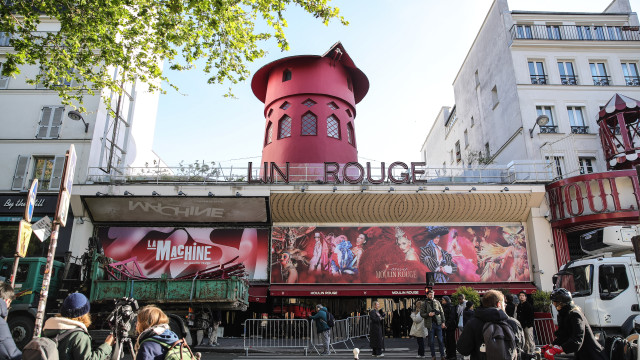Even without its famous windmill blades, Moulin Rouge never stops entertaining: twice a night, 365 nights a year, in a whirlwind of feathers, crystals and sequins.
The fins of the 135-year-old cabaret in the Montmartre district of Paris collapsed last month - the cause remains unknown.
But about 1,700 spectators keep coming every night and the show goes on. And while the 60-member troupe of Doris' Girls - named after legendary choreographer Doris Haung - gets all the attention, creating and maintaining their costumes is hard work.
The show has daunting demands: nearly 1,000 custom-made costumes, each requiring up to 250 hours of work, and 800 pairs of shoes.
The sound of sewing machines backstage is almost constant before and after, and sometimes during, performances.
"We're on stage every night. The costumes wear out... But the show must always be the same, of the highest quality," the cabaret's 38-year-old general director Jean-Victor Clericot told AFP.
Moulin Rouge, which has been owned by the same family for four generations, began buying up small artisan workshops in 2000 - some specializing in feathers and embroidery - struggling to survive in modern Paris.
“These artisans are a living heritage that was in danger of disappearing. They are essential to the show,” Clerico stressed.
"It was Moulin's duty to perpetuate their existence and allow their knowledge to be passed on to younger generations," he added.
88-year-old Mine Verges, a costume designer since the 1960s, was one of the first to fall under Moulin's hat.
Her atelier supplies and supports the troupe as well as many other clients.
"The most elaborate costumes are those of the cabaret. Everything must be much more solid than normal clothing, and when there are feathers, it must above all be comfortable for the dancers. Moulin Rouge is the first cabaret I worked with and it will be the last,” she said.
Maison Fevrier, supplier to haute couture houses such as Hermes and Louis Vuitton, was established in 1929 and is the last feather workshop in the heart of Paris.
The French government officially recognizes her "plumasserie" (fine processing of feathers) as a "living heritage".
In 2009, she became part of the Moulin family and processes about three tons of ostrich, pheasant and rooster feathers for the cabaret every year.
The embroidery is done by Atelier Valentin using the heritage technique of crochet and chain stitch.
"Magnificence has always fascinated me. There are no limits to what can be embroidered: sequins, pearls, crystals, metal pieces... The only requirement for a stage costume is to be durable," said its director Caroline Valentine, whose clients include the Paris Opera, Disney, Givenchy and the French Academy.
Shoes are another integral part of the show, especially for the energetic Can-Can dances that end each evening.
Clairvoy, a shoe company founded in 1945, has been part of Moulin's business since 2007.
Nicola Maistrio, 45, and his team make the troupe's shoes, each pair taking up to 60 hours to assemble, not counting maintenance and replacement when the dancers' heels wear out.
Kylie Minogue has also turned to Maison Clairvoy for her recent tour.
"Our work is extremely satisfying," said Valentin. "We have the huge chance to create beauty... This is the meaning of artistic craftsmanship." /BGNES







